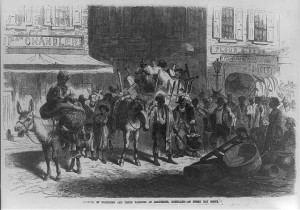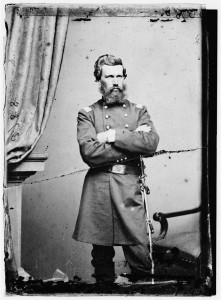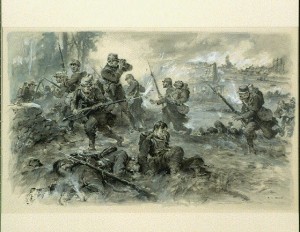
New York Times June 8, 1865
150 years ago yesterday Gotham “was in a blaze of excitement” – Lieutenant-General Grant was in town! (and by the way there was a monster meeting at the Cooper Institute to show support for President Johnson and his administration; the president was in attendance along with General Grant and others). On June 8, 1865 General Grant traveled to West Point, where he met General Winfield Scott. He was again mobbed by folks who wanted to shake his hand and maybe get an autograph.
From The New-York Times June 9, 1865:
GEN. GRANT’S MOVEMENTS.; His Successful Strategy and Quiet Rest at the Astor House. Sail Up the Hudson and Visit to West Point. Interview with Gen. Scott Review of the Cadets Levees and Great Crowds. HIS DEPARTURE FOR ALBANY.
Gen. GRANT, true to his great reputation as a “flanker,” completely outmanoeuvred New-York, by leading the public to suppose, through the newspapers, that he had left the city at midnight of Wednesday, on his way to West Point. In reality, he slept quietly at the Astor House until 6 o’clock yesterday morning, when he proceeded up the river on his projected visit. As a piece of pure strategy this manoeuvre ought to rank high among the many similar achievements of the Lieutenant-General.

NY Times June 8, 1865
On Wednesday night, after the ceremony of the serenade was over, and the gallant Seventh Regiment, with their magnificent band had departed for their several homes, the General threw out reliable flankers, and posting a strong rear guard, he contrived to move his forces, unperceived by the admiring enemy, eluding the vigilance of the public by throwing himself into a feint movement looking toward departure by the steamer Henry Burden, while he, in reality, executed a masterly forced march, and so gained one of Mr. STETSON’s cosy and comfortable rooms, where, quite exhausted, he sought that repose so necessary after the fatiguing and arduous labors of the day.
At 6 o’clock yesterday morning, the General and his party were up, and after making a hurried breakfast at the Astor House, proceeded very quietly to the government wharf, Castle Garden, where Gen. DIX’s convenient and rapid little dispatch steamer, the Henr[y] Burden, was lying, awaiting the arrival of the distinguished party to carry them to West Point. Precisely at 7 A.M. the Burden cast loose, and heading up stream, was soon on her rapid way up the Hudson.
This saucy little dispatch steamer which conveyed the Lieutenant-General to West Point, has quite an interesting history. Her captain was the First Engineer of the first Union gunboat which fired a shot in the late war, on board the Freeborn, commanded by Commodore WARD, and he served with distinction on that craft in the Potomac flotilla.
The Henry Burden was the first boat to go to Aiken’s Landing to exchange prisoners, and for some time the different negotiations of the Commissioners of Exchange were held on board. It is also a singular fact that upon the Burden the celebrated trial of Capt. BEALE, who was hung on Governor’s Island for piracy, was held as she lay moored to the dock at Port Lafayette. She also had performed efficient service in transporting state prisoners to the fort for safe-keeping. In this neat little craft. Gen. DIX lately made the tour of his Department, and the general history of the steamer is very interesting.
![West Point in 1862 (between 1910 and 1920]; LOC: http://www.loc.gov/item/hec2009000820/)](https://www.bluegrayreview.com/wp-content/uploads/2015/06/14120v-300x239.jpg)
“West Point in 1862 ” (Library of Congress)
Very few persons witnessed the departure of Gen. GRANT and his friends from either the hotel or the steamer, and it evidently gratified the Lieut.-General very much to find that he would not have to undergo the terrible ordeal of the day previous, of which he no doubt retained a very lively recollection. As the carriages left the Astor House, the few who did catch a glimpse of the General seemed much surprised no doubt thinking him already gone, and before they recovered from their surprise the party had disappeared. At the battery a small police force were on hand to afford the party proper protection, but it was not found necessary, as very few people were about, and those that were did not seem to be aware of the presence of the man whom they all wanted so much to see. …
The trip up the lovely Hudson was greatly enjoyed by the General and his friends. All the way up the Burden was saluted by every passing steamer, for it was evidently known that the swift-going craft, so daily decorated with flags, had on board the Commanding General of the armies of the United States.
As the steamer neared the little unpretending landing at West Point, the crowd on shore congregated at every available point, seemingly determined to see the General as often as they could. As was the case when Gen. SHERMAN visited the Academy, Gen. GRANT was met at the wharf by Adjutant BOYNTON, who escorted the party to Gen. CULLUM’s residence, the Superintendent of the Academy, where they remained for some little time.

LIEUTENANT-GENERAL GRANT VISITING GENERAL SCOTT AT COZZENS’S H0TEL, WEST POINT JUNE 8, 1865,… .]
Gen. GRANT then accepted the use of Mr. SAMUEL SLOAN’s carriage, and accompanied by that gentleman and family, Mrs. GRANT, Gen. AUGUR, Gen. CULLTM, and Col. BADEAU, of his staff, he rode down to Cozzen’s Hotel and visited Lieut.-Gen. SCOTT, who received him with great cordiality. The meeting of the two Lieutenant-Generals was interesting in the extreme — the venerable and aged General, representative of a bygone day, recalling the historic names of Lundy’s Lane, and of the many Mexican battle-grounds on which he nobly sustained the glory and honor of the nation. His visitor, low-sized, quiet and unobtrusive, listening with attentive and respectful ear to the words of welcome uttered by the grand old soldier, made the spectator contrast the two representative men, and recall the many glorious deeds each had performed. As one gazed upon them, he could not but remember the gigantic strides the nation had made in the art of war, and the wide difference between the campaigns of the two Generals then conversing together.
Gen. SCOTT said but little, merely expressing his gratification at seeing Gen. GRANT once more, and his pleasure at finding him in such good health after the arduous campains and perils he had undergone. Gen. GRANT said less. The interview was quite informal and sociable.

and back to West Point (“Grant from West Point to Appomattox”. 1885, Library of Congress)
Returning from Cozzen’s Gen. GRANT visited the library where the daily examination of cadets was proceeding, and the crowd were kept back by a cordon of sentries. Afterwards Gen. GRANT accompanied Gen. CULLOM through the different buildings, expressing himself pleased at everything he saw. On going over to Roe’s Hotel the General unconsciously fell into a snare, for the crowd now became colossal in its proportions, swarming about the hotel, peeping into the windows, crushing through the doors, and climbing the piazzas, one and all intent upon seeing the General, and behaving in the delightful manner customary with the dear curious public.
Finding that the crowd would not be satisfied with a mere glimpse, the General consented to hold a short levee for the gratification of the people when the scene of Wednesday were repeated. The crowd shook the General’s hand almost to the vage [verge?] of dislocating his already swollen wrist, and besieged him for his autography, until his good nature gave way and the levee came to on untimely end.
The General escaped to the rear piazza, and flattered himself that he could rest for a time in quiet. But no; the crowd surged through the passage, and a heavy column swept round the wing, and he found himself forced to surrender as unconditionally as he had compelled his adversaries in the field. Another half hour was thus wearily spent, when the General was relieved most opportunely by the arrival of the Board of Visitors and the Academic Board, who carried Gen. GRANT off in triumph to the main parlor, where the party enjoyed a social chat. …
The scene of the dinner was an extraordinary one. At either end of the hall are two large windows, and at each of these windows an eager crowd stood cramming and pushing, all intent upon seeing the man of the day and of the hour. Gesticulating, struggling, swearing and entreating, these crowds toiled and sweeted at their self-imposed task, never tiring or becoming discouraged. As each successful sight-seer fell back with a sigh, his place was quickly filled by a new-comer.
While the dinner was in progress, the already large crowd was still further increased by the arrival of the Daniel Drew, from Albany, which steamer touched at the landing about four o’clock, and disgorged some five or six hundred passengers, who, on their gaining the hotel, became quite fierce in their persistent endeavors to gain a sight of the General. As it was fast nearing the time for the review and drill of the cadets the crowd gradually forsook the vicinity of the hotel and repaired to the parade-ground, where the band had already made its appearance. Only a few insatiable mortals remained to do honor to the General.
The dinner came at length to an end by Gen. SCHENCK proposing the health of Gen. GRANT, the guest of the day, which was drank with much enthusiasm, but no response was made to the toast by the taciturn tactician, and so the dinner party adjourned. The General soon after entered a carriage and drove rapidly through the crowd to Gen. CULLOM’s residence, to await the review.
This review and exhibition drill of the cadets of the Academy deserves a more extended notice than our present limits will permit. Suffice it to say that the music was splendid; the appearance of the cadets, in their neat uniform of grey and white, was admirable, and their drill and movements the acme of perfection. The programme consisted of the regulation review in column, at “rear open order,” the marching salute in common time and at the double-quick. The battalion was afterward put through a choice variety of tactical manoeuvres, by their commandant. Col. BLACK. The performance evinced the careful drill and discipline, of the cadets to a remarkable degree. After the review and drill, the customary dress parade was gone through with, and the parade being dismissed by the Cadet-Adjutant, Mr. HULL, the graduating class for the present year grounded arms, and marched forward to greet the Lieutenant-General, who was supported by Leiut.-Gen. SCOTE. This part of the day’s proceedings was a most pleasing sight. Gen. GRANT then shook hands with the class in turn, addressing each, as they were introduced by Gen. CULLOM, in a few kind words, sending each young cadet away with a flushed and happy face.
Thus closed the visit of Gen. GRANT, and the crowd at last began to disperse. The steamer Mary Powell, on her way to Rondvt, touched at the wharf and loaded herself down to the gunwales with passengers, being compelled to draw out into the stream without several hundred people, who could be seen hurrying down the hill to get on board. The little ferry-boat West Point did a large business in carrying visitors to and fro, being compelled to run from either bank of the river incessantly.
At 7 o’clock Gen. GRANT drove down in Gen. CULLOM’s carriage to the ferry and crossed over to Garrison’s, to await the up train for Albany. In the carriage were Mrs. GRANT, and Gens. CULLOM and AUGER. The crowd upon the ferry boat was terrific, so much so that Gen. GRANT’s friends were very apprehensive for his safety. On board the boat the scene was quite ludicrous, for the never-satisfied people gathered round the carriage, and stood staring stolidly at the General, who took the matter very coolly, meanwhile puffiing, defiantly puffiing away, at the never-absent cigar.
Guarded by his aids and personal friends the General contrived to remain in comparative quiet until the arrival of the express train, when he escaped into the sleeping-car, where berths had been reserved for the party. Amidst a wild and thrilling cheer from the crowd the train moved off, and so ended the General’s visit. The down trains for New-York were fearfully jammed by the crowds returning to the city, and it was difficult for one to gain a foothold let alone a seat.
Among the many items of interest consequent upon the examination of the class of 1865, is the getting up of a superb series of seventy-two albums, containing views of West Point scenes and buildings, and the carte de visites of the entire class. These albums are gotten up in the highest style of the art by Mr. M.B. BRADY, the distinguished photographer of Broadway. Nothing could be finer than the execution of these interesting collections of photographs, and they will form valuable mementoes to the members of the class.
The TIMES is under many obligations to Capt. C.B. SPENCER, of the Henry Burden, for courtesies extended to its representative while on board the excursion steamer.
The image of the two Lieutenant-General meeting was published in the June 24, 1865 issue of Harper’s Weekly at Son of the South.








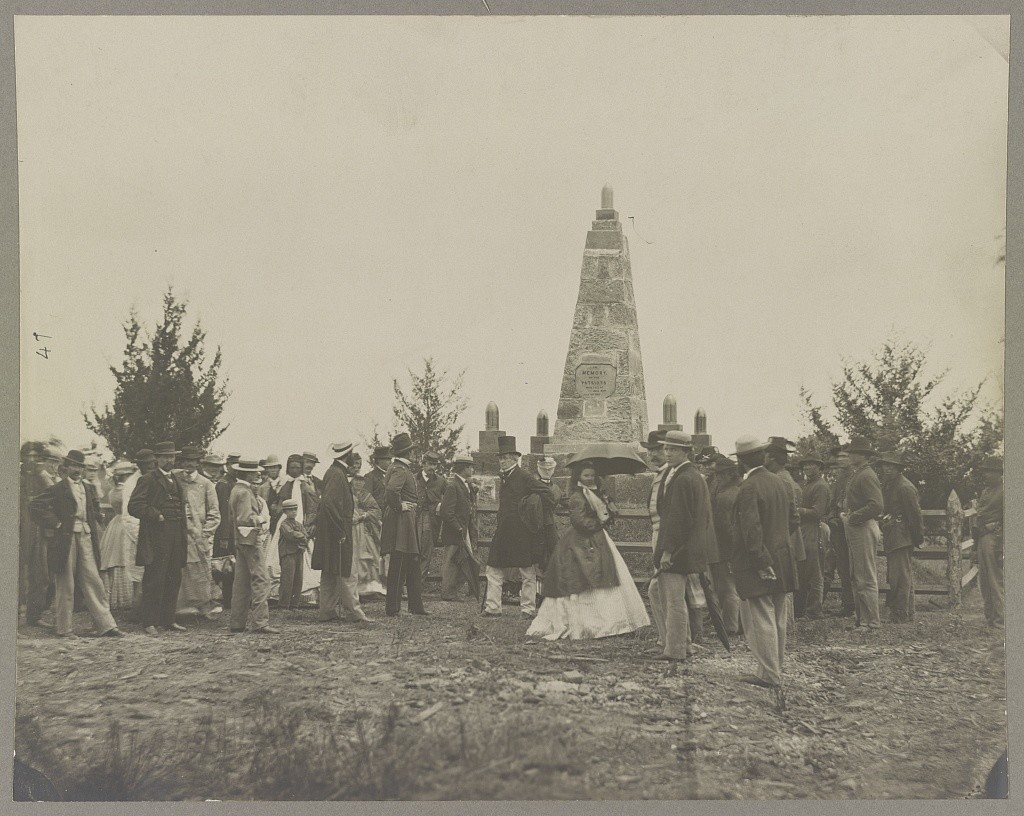
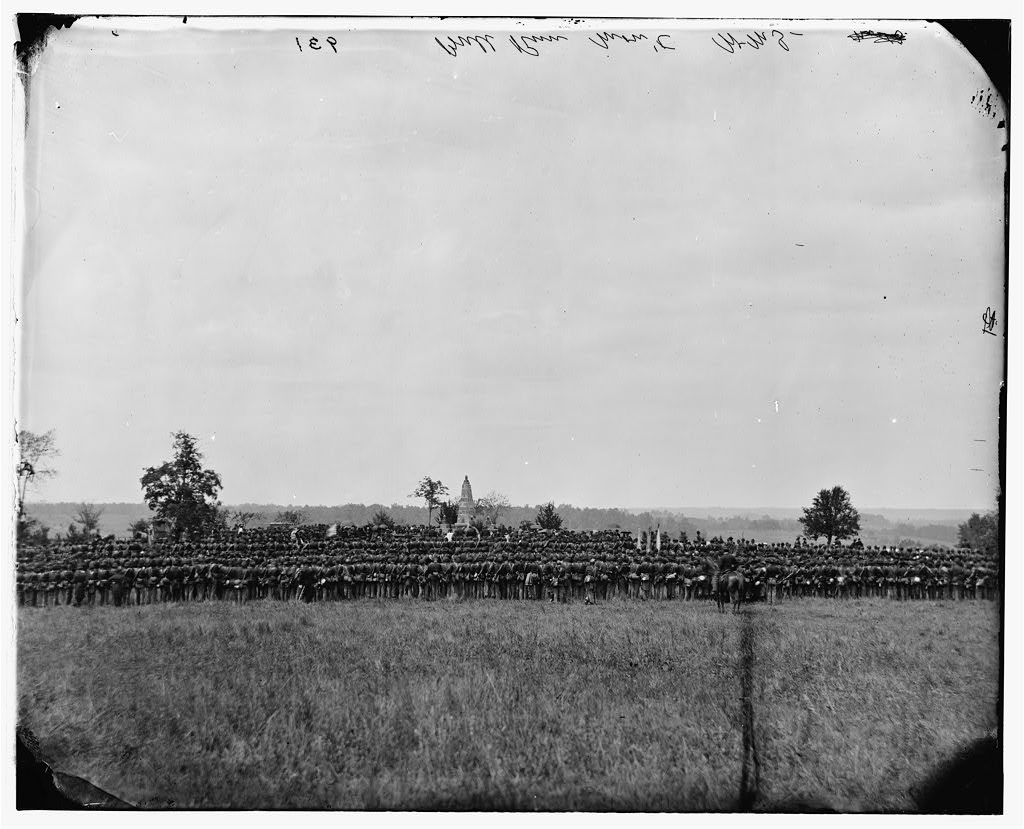


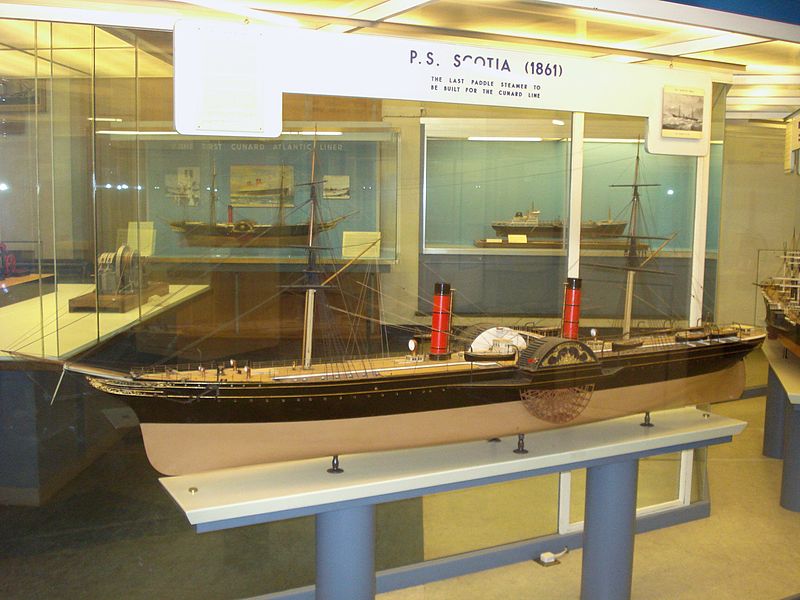


![West Point in 1862 (between 1910 and 1920]; LOC: http://www.loc.gov/item/hec2009000820/)](https://www.bluegrayreview.com/wp-content/uploads/2015/06/14120v-300x239.jpg)



![Joseph E. Johnson [i.e., Johnston] / engraved & published by William Sartain, 728 Sansom St., Philada. (http://www.loc.gov/item/91732234/)](https://www.bluegrayreview.com/wp-content/uploads/2015/06/3c03202v-240x300.jpg)
